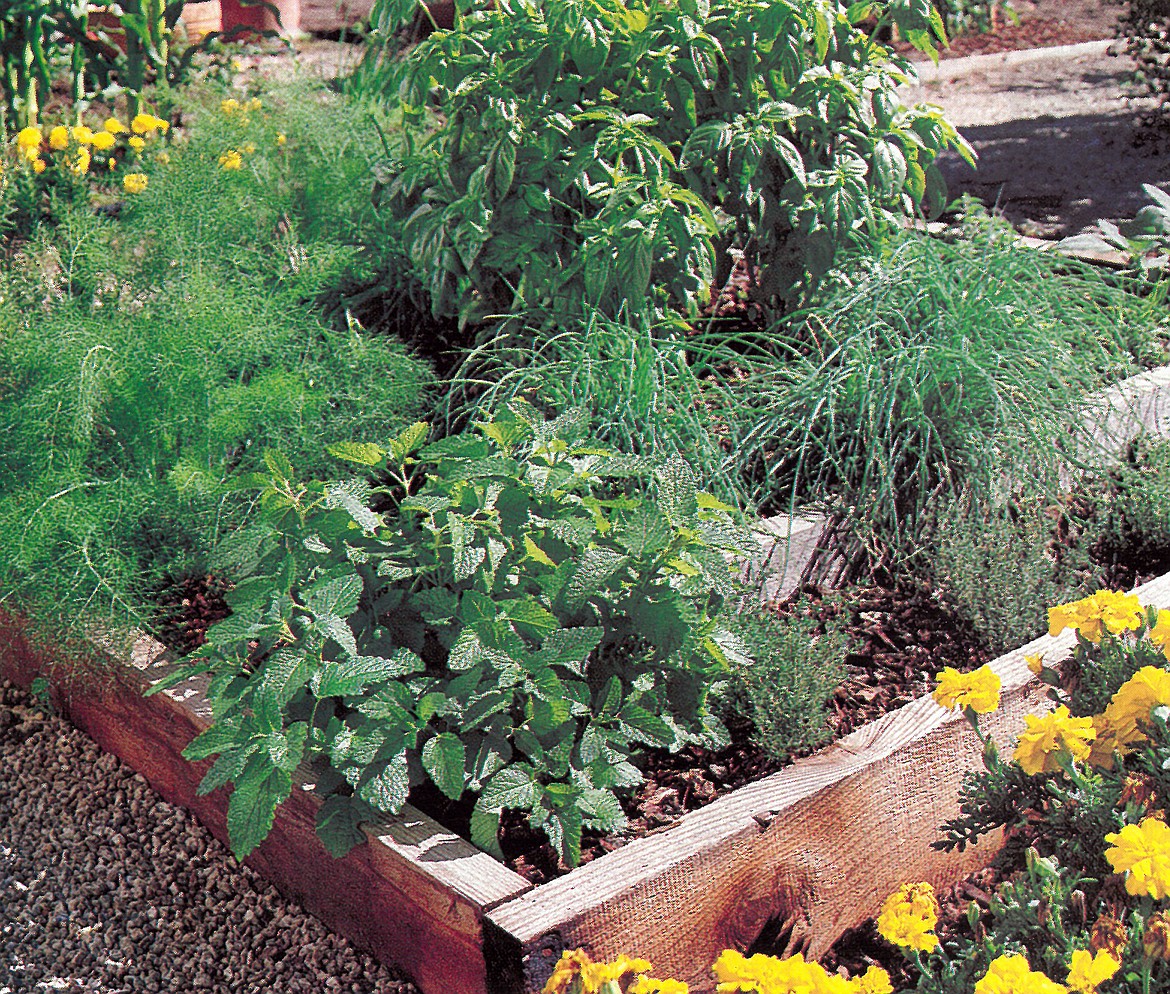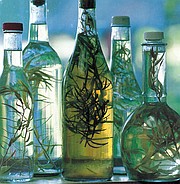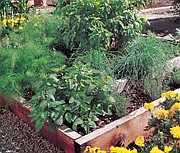Show-off vinegars as simple as plucking an herb
Last week’s column on the blessings of vinegar and oil in cookery focused on the glories of really fine olive oils, so this time around we’ll talk about vinegars. My thoughts originally didn’t take into consideration the efficacy of creating your own however, so this offering will be sort a cross-over option for folks of either persuasion.
With the herb harvest beginning in earnest now, and in many homes (mine included) the focus is on vinegar making. If you haven’t joined the ranks of this fun occupation, read this column for the reassurance it will give you, for making vinegar is the easiest and most rewarding of kitchen activities.
However, the combinations offered here can also often be utilized by the simple expedient of simply adding your chosen herb to your vinegar (see illustration). When doing this, allow the bottle to sit for a couple of weeks for the herb to infuse.
After reaching the desired taste, discard the old herb sprig, replace with a fresh one, and use as desired.
To go a bit further with the creation process, begin with purchased vinegar — wine vinegars are the best for smoothness, and a variety of options are open for consideration.
• Red wine vinegar — equal parts of dry red wine (Chianti, Burgundy, Bordeaux, etc,) and vinegar of choice;
• White wine vinegar — equal parts of Rhine (tart/tangy), Pinot Grigio (mellow, dry), Sauternes (sweet), etc. and white wine vinegar.
Be a “taster” to ensure your chosen combinations will work. “Harsh” wines like red Burgundy and many Rhine wines — paired with acidic cider — and/or distilled white vinegar can make a combination that will pucker your lips into permanent prunes.
Use common sense, and go with your own taste-bud preferences and use the following suggestions as guidelines.
Basil Wine Vinegar
3 cups white wine or champagne vinegar
2 cups fresh basil leaves*
Rinse basil, shake or pat dry and place in a clean quart jar or bottle.
Heat vinegar in a saucepan to steaming, but do not allow to boil. Remove from heat and pour over basil using a funnel if necessary.
Seal with the jar lid or bottle cork and store in a dark place for 10 days, shaking gently every day.
When time is up, strain the vinegar and discard basil. Pour vinegar into smaller clean bottles — preferably pretty ones you have collected for this use. Place a fresh perfect sprig of basil in each bottle; cork. Your vinegar is now ready to use on green salad and veggies — especially fresh tomatoes!
* Opal basil makes a lovely lavender-colored vinegar.
Chive Wine Vinegar
3 cups White wine or Malt vinegar
2 cups chopped fresh chives, including whole flower heads
Rinse chives (while whole for easier patting dry) and place in clean quart jar or bottle. Heat vinegar till just ready to boil then remove from heat and pour over chives.
Seal and store in dark place for 10 days — shaking gently once daily. Strain, discard chives and place vinegar in smaller decorative bottles. Place 2 or 3 whole chive stems, and if possible one or two chive flowers in each bottle. Use in oil and vinegar dressing.
You’ve seen the basic mode, now — so remembering the rule of 2 cups of herbs to 3 cups of vinegar with 10 days of rest in the dark with a daily shake followed by bottling with a fresh herb sprig — here are some more combinations for flavorful vinegars to savor and be proud of.
Note: There will be a few changes from time to time to read — and copy — carefully.
Mint Wine Vinegar
3 cups red wine vinegar
Use fresh mint leaves in steeping period and a sprig of mint (with flower head if possible) in final bottling.
Use with lamb and/or Harvard beets.
Tarragon Wine Vinegar
1 quart white wine or rice wine vinegar
Sprigs of tarragon in a bouquet to fill the jar loosely.
Great with chicken, fish and wild game marinades.
Garlic Wine Vinegar
1 quart red wine or sherry vinegar
1 bulb garlic, separated into cloves, peeled
After heating vinegar, drop garlic cloves into vinegar and let stand till lukewarm. Pour entire contents into clean quart jar.
Follow basic 10 day procedure, discard garlic and place fresh garlic clove in each container when bottling.
Red Raspberry Vinegar
3 quarts red raspberries
1 pint red or white wine vinegar
Sugar
Combine raspberries and vinegar in wide-mouth jar. Cover and refrigerate for 24 hours. Strain and measure vinegar; add an equal amount of sugar. In a stainless steel pan bring vinegar and sugar to a boil; reduce heat and simmer 10 minutes. Pour into decorative bottles, cork and store in a dark place.
Note: Do not add raspberries to the final vinegar — they will disintegrate. However, if you make this recipe using huckleberries or blueberries, you may add a few firm berries* to the final bottles.
* This applies to non-vinegar-makers who are simply adding herbs etc., to their bottles.
Rosemary/Lemon Wine Vinegar
White wine OR Champagne vinegar
Fill quart jar loosely with sprigs of rinsed, patted-dry rosemary; add peel of one lemon cut into a continuous spiral, trying to keep free of pith. Cover with hot vinegar and follow 10-day procedure. Strain, using new sprigs of rosemary and small fresh lemon strips in individual bottles.
Whatever plan you go with, use your imagination for other vinegars using the variety of herbs at your disposal. Add a nasturtium flower to the chive or tarragon vinegars if you wish; or consider Champagne vinegar with lavender sprigs. Dozens of dazzling possibilities await!
Valle Novak writes the Country Chef and Weekend Gardener columns for the Daily Bee. She can be reached at bcdailybee@bonnercountydailybee.com. or by phone at 208-265-4688 between the hours of 8 a.m. to 7 p.m.





